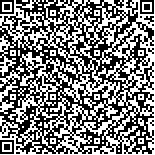孙志成,王彤,顾晓美,等.虚拟现实训练对养老机构主观认知下降患者认知功能和功能性体适能的影响[J].中华物理医学与康复杂志,2023,45(4):320-325
扫码阅读全文

|
| 虚拟现实训练对养老机构主观认知下降患者认知功能和功能性体适能的影响 |
|
| |
| DOI:10.3760/cma.j.issn.0254-1424.2023.04.007 |
| 中文关键词: 虚拟现实训练 养老机构 主观认知下降 认知功能 功能性体适能 医养结合 |
| 英文关键词: Virtual reality training Nursing homes Cognitive decline Cognitive functioning Functional fitness Elderly medical care |
| 基金项目:江苏省卫生健康委医学科研项目(Z2021080);国家重点研发计划资助项目(2018YFC2001600,2018YFC2001603);江苏省老年医学学会老年医学科技发展基金(医养结合)专项项目(JGS2019ZXYY03) |
|
| 摘要点击次数: 3912 |
| 全文下载次数: 4522 |
| 中文摘要: |
| 目的 观察虚拟现实(VR)训练对养老机构主观认知下降(SCD)患者认知功能和功能性体适能的影响。 方法 选取养老机构SCD患者56例,按随机数字表法分为观察组和对照组,每组患者28例。2组患者均给予阶段性的健康教育和养老机构常规养老护理服务,观察组在此基础上增加VR训练干预,VR训练包括八段锦、变魔术、鸟儿飞翔、超市购物、引力球、健身房共6项,每周3次,每次共训练45 min,连续训练6个月。于干预前和干预6个月后(干预后)分别对2组患者进行认知功能评估[包括主观认知下降量表(SCD-Q)、蒙特利尔认知评估量表(MoCA)、Rivermead行为记忆测验第2版(RBMT-Ⅱ)、数字符号转换测验(DSST)、动物词语流畅性测验(AFT)和连线测验A-B(TMT A-B)]和功能性体适能评估[包括8英尺起立行走测试(8UGT)、30 s手臂弯曲试验(30sACT)、30 s坐椅站立试验(30sCST)、双手背勾测试(BST)、坐椅前伸试验(CSRT)和2 min踏步试验(2MST)]。 结果 干预后,观察组的SCD-Q、MoCA、RBMT-Ⅱ、DSST、TMT-A和TMT-B测试结果与组内干预前比较,均明显改善,差异均有统计学意义(P<0.05),且观察组上述认知功能评定指标干预后均显著优于对照组干预后,差异均有统计学意义(P<0.05)。干预后,观察组患者的8UGT、30sACT、30sCST、CSRT和2MST测试结果分别为(6.70±1.87)s、(19.23±5.02)次、(18.21±4.36)次、(-0.21±2.48)cm、(103.75±6.38)次,与组内干预前比较,均明显改善,差异均有统计学意义(P<0.05),且观察组上述功能性体适能评定指标干预后均优于对照组干预后,差异均有统计学意义(P<0.05)。 结论 VR训练可有效地改善养老机构SCD患者的认知功能和功能性体适能,适用于养老机构内推广、实践。 |
| 英文摘要: |
| Objective To observe any effect of virtual reality (VR) training on the cognitive functioning and functional fitness of nursing home residents with subjective cognitive decline (SCD). Methods Fifty-six of such residents were randomly divided into an observation group and a control group, each of 28. Both groups received health education and routine care, but the observation group was additionally provided with 45 minutes of VR training three times a week for 6 months. The training included Baduanjin, magic, flying bird, supermarket shopping, gravity ball and gym episodes. Both groups′ cognition was evaluated using the subjective cognitive decline questionnaire (SCD-Q), the Montreal cognitive assessment (MoCA), the Rivermead Behavioural Memory Test (second edition) (RBMT-Ⅱ), a digit symbol substitution test (DSST), an animal fluency test (AFT) and trail-making test A-B (TMT A-B). Functional fitness was quantified using the 8-foot up-and-go test (8UGT), a 30-second arm curl test (30sACT), a 30-second chair stand test (30sCST), a back scratching test (BST), the sit-and-reach test (CSRT) and a 2-minute step test (2MST) before and after the 6-month intervention. Results After the intervention, the average SCD-Q, MoCA, RBMT-Ⅱ, DSST, TMT-A, and TMT-B scores of the observation group were significantly better than before the intervention, and significantly better than the control group′s averages. And except for the back scratching their functional results were also significantly better, on average, than those of the control group. Conclusions VR training can effectively improve the cognition and functional fitness of nur-sing home residents with SCD. Such training is worthy of promotion and wider application in nursing homes. |
|
查看全文
查看/发表评论 下载PDF阅读器 |
| 关闭 |
|
|
|